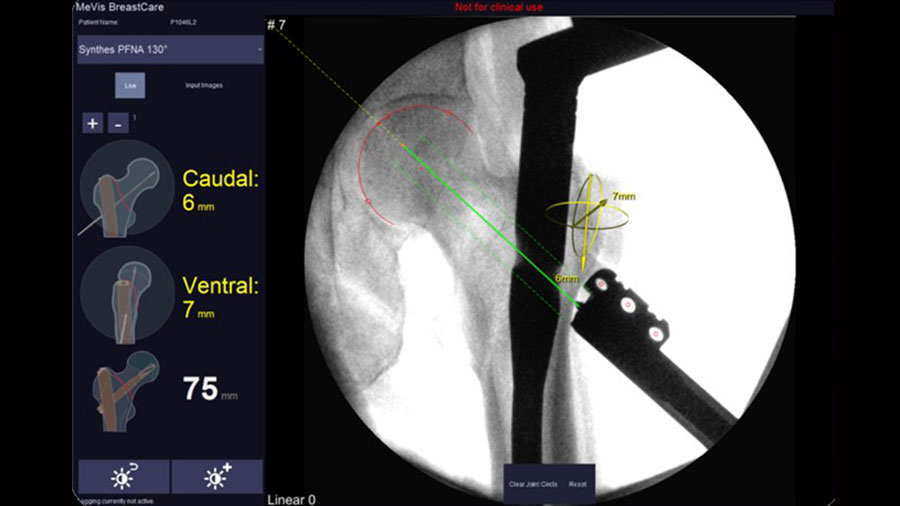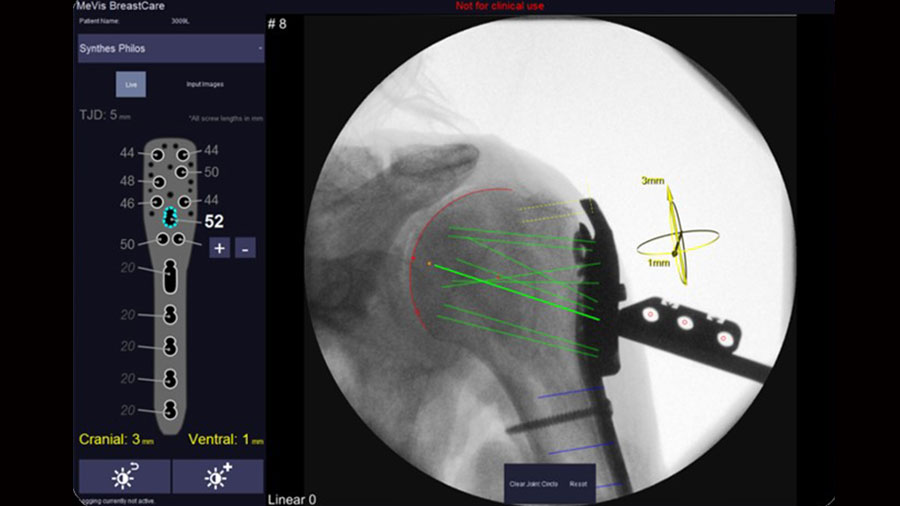Solutions
If you are interested in our technology please contact Ulrich Bentz.
Hydrogel for local antibiotic delivery
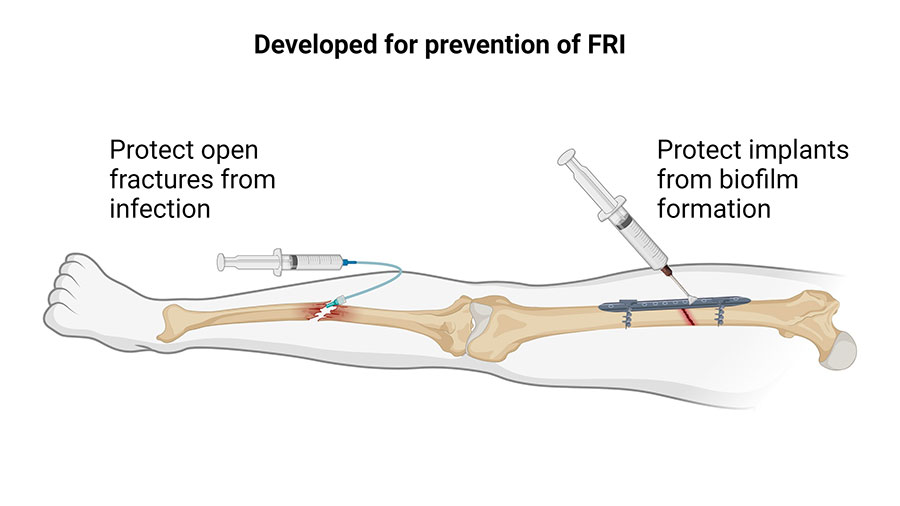
Clinical problem
Fracture-related infection is a devastating complication following bone fractures and can result in prolonged recovery times, mal- or non-union, multiple revision surgeries, lifelong functional impairment, and elevated costs.
Proposed solution
A new, bioresorbable, injectable, antibiotic-eluting hydrogel (hydroGEl for Delivery of AntIbiotics, GEDAI) targeting the prevention of fracture-related infections was developed to deliver high doses of antibiotics to the injury site. GEDAI is based on readily available and well-known raw materials with a long track record of use in the pharmaceutical and medical industry for implantation or injection.
Based on surgeon input, the GEDAI was specifically formulated to limit adhesion to gloves. As such, GEDAI allows easy handling and application in multiple anatomical locations, regardless of the approach used for fracture fixation. The properties of GEDAI have been evaluated by rheology, release studies and injection force tests. Additionally, metal/soft tissue/glove adhesion in cadaver trials and stability studies were performed. Finally, the gel has been tested in challenging animal models of infection treatment. At present production validation is being carried out, and discussions are ongoing with regulatory authorities for first-in-human clinical trials.
“Image created using BioRender.com.”
Biphasic Plate: New generation of locked plating
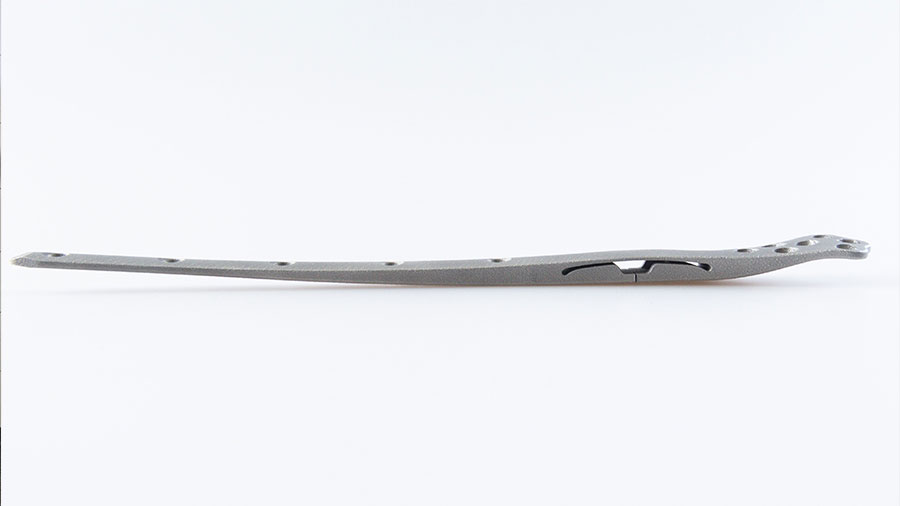
Clinical problem
Healing complications occur in up to 10 percent of cases, of which a significant portion may be attributed to unfavorable mechanical conditions at the fracture. Moreover, state-of-the-art plates are prone to failure from excessive loading or fatigue.
Proposed solution
A new biphasic plating concept has been developed to create controlled mechanical conditions for timely and robust bone healing and simultaneously improve implant strength. Thereby, the concept aims to enable confident early weight-bearing believed to be crucial for superior fracture repair.
Fracture Monitor: Toward the world's first continuous healing sensor
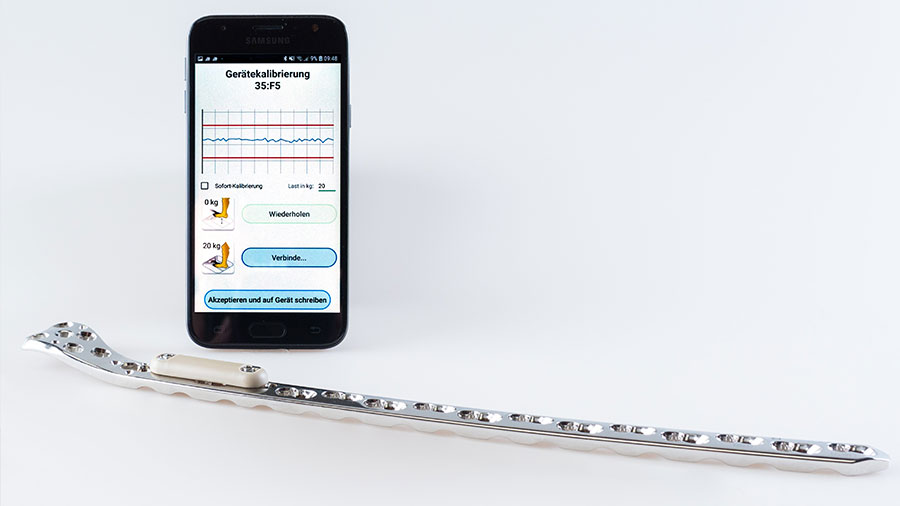
Clinical problem
Radiography, the current gold standard to evaluate fracture healing fails to deliver objective and timely feedback on the integrity of the repair process and comes at the price of harmful radiation exposure. As a result, supervision of the healing process is subjective and fragmented. Important interventions in case of healing complications are all too often significantly delayed.
Proposed solution
Using an implantable sensor system to quantitatively assess fracture activity, bone healing progression can be continuously monitored via remote access. The implant is attached to conventional osteosynthesis plates and operates autonomously and maintenance-free throughout the course of healing. Through communication with the patient's smartphone, the seamless data stream offers new possibilities for improved and patient specific rehabilitation and supports the early detection of healing disturbances.
X-in-One: Placing implants safe and sound
Clinical problem
The task of placing implants plays a key role in trauma and orthopedics surgery. Current solutions for computer aided surgery lack of wider acceptance due to considerable disadvantages regarding complexity, costs, and effectiveness.
Proposed solution
A simplified computer aided surgery system X-in-One has been developed* utilizing a conventional C-arm as imaging and navigation means rendering additional tracking and imaging equipment obsolete. The system provides simple integration into standard clinical routine and strong potential for improving clinical practice for a variety of surgical interventions in trauma and orthopedics.
*Graphical User Interface in collaboration with Mevis Medical AG
GoForce: Guided growth regulation revisited
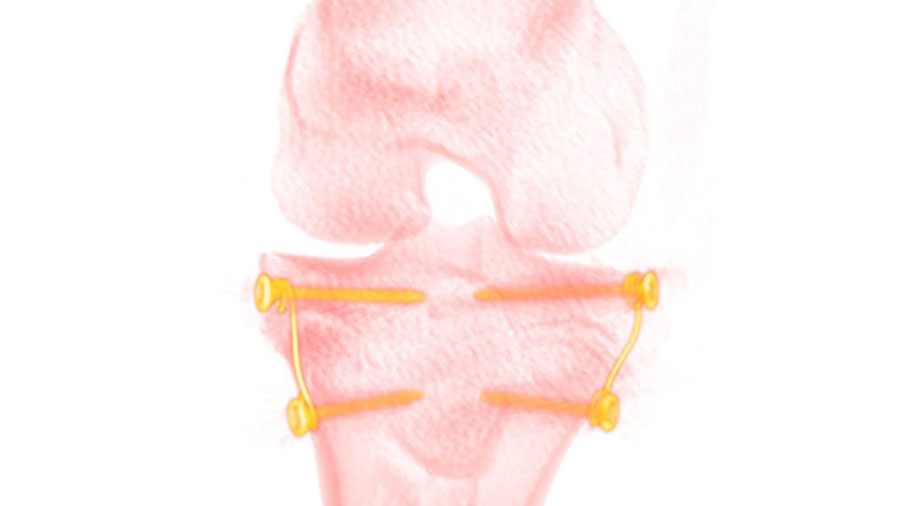
Clinical problem
Limb deformities in children and adolescents are commonly corrected by the guiding growth technique whereby the deformity is equalized by inhibiting the growth with an implant. The treatment effect of currently utilized implant solutions is a function of growth. Hence, they require proper treatment planning and appear inefficient, particularly in correction of leg length discrepancies.
Proposed solution
A new constant force implant concept has been developed to realize controllable and efficient growth regulation. Treatment and outcomes are, thereby, rendered predictable. At the same time implant failures can be avoided.
AutoGauge: A smart drilling device
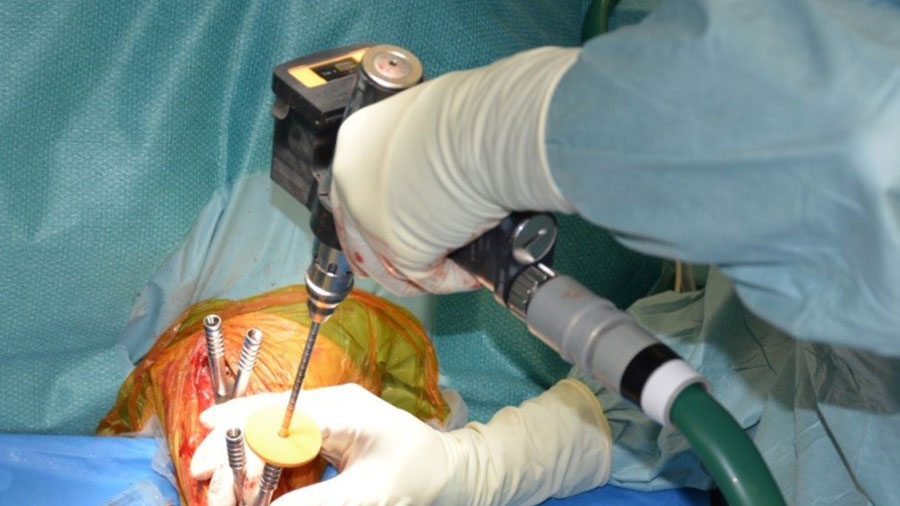
Clinical problem
Well executed plate or nail osteosynthesis requires the placement of the correct screw lengths to ensure fixation stability and avoid soft tissue irritation. The use of the current state of the art manual depth gauge requires an additional step after pilot hole drilling and it has been frequently reported to be problematic in use leading to replacement of screws afflicted with increases surgery cost, time, and radiation dose.
Proposed solution
AutoGauge is an add-on device that can be attached to conventional surgical drills. It uses a high-precision laser sensor to measure the actual drill depth directly during drilling. By analyzing the signal in real-time, it detects the required screw length on the fly and displays the results to the surgeon. As an intraoperative digital aid, the device intends to ensure correct screw length selection, save operating room time and costs.
Research programs
Regenerative Orthopaedics
The Regenerative Orthopaedics program is a multidisciplinary group taking an holistic approach to regenerative medicine for the repair of traumatic injuries of the musculoskeletal system.
Biomedical Development
The Biomedical Development program offers extensive know-how, expertise, and experience in the fields of biomechanical testing and computational analyses to advance patient care.
Preclinical Services
Preclinical Services conduct all AO Research Institute Davos in vivo studies—often in close collaboration with other focus areas.


